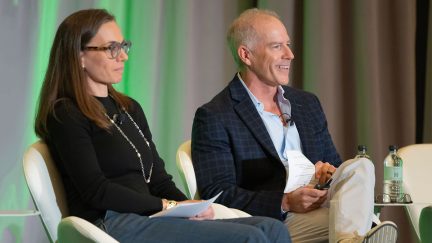Never miss a story — sign up for PLANADVISER newsletters to keep up on the latest retirement plan adviser news.
In Debt Versus Savings, Advice May Help
Increasing household debt may be responsible for the stubbornly low retirement readiness of defined contribution plan participants, a study suggested. The average defined contribution (DC) participant is accumulating debt faster than he or she is accumulating retirement savings, HellowWallet said in “Debt Savers in Defined Contribution Plans: Size, Causes, and Solutions.”
The average 401(k) and other DC plan participant now defers more than 8% of their annual income toward retirement savings through their plan and Social Security taxes. But the typical worker near retirement only has about two years of replacement income saved, or about 15 years short of the median lifespan post-retirement, according to the paper.
One explanation may be the increase in household debt. With more household income going to pay off debt, households may have less money to save and consequently may face higher costs of living in retirement, said Matt Fellowes, founder and chief executive of HelloWallet, and the paper’s author. (The paper was co-written by Jake Spiegel, a research associate at HelloWallet.)
The monthly debt obligation of active DC households near retirement (between 50 and 65 years old) increased by 69% between 1992 and 2010, now adding up to about 22 cents of every $1 earned.
Plan sponsors may scout a number of strategies to help participants save more, but no single practice is likely to be the answer.
Access to guidance is important, Fellowes told PLANADVISER. “Plan sponsors can move the retirement readiness needle among their participants by providing access to holistic, independent guidance that is accountable to sponsors and produces regular, measurable retirement readiness metrics,” he said. “Given new technology innovations and insight into consumer psychology, this is a problem that sponsors can now meaningfully address in their plans.”
Advice Can Drive Success
In particular, Fellowes said, access to independent guidance that addresses all the drivers of retirement success, in addition to an individual’s 401(k) balance, can improve retirement readiness. Guidance or advice should produce regular, measurable success metrics.
Automation features – enrollment, and escalation – are necessary but insufficient on their own to help workers improve their retirement readiness, Fellowes said. “In fact, participants that increase their savings deferrals are more at risk of increasing debt faster than savings, compared to those that do not increase savings deferrals,” he said.
“We now work with some of the largest plans in the country and have dozens of examples that sponsors can materially improve the financial health and retirement readiness of their population,” Fellowes said. “To be sure, it's hard work. But, by relying on technology and psychology, we are cracking this nut.
Using data from the Federal Reserve and the Census Bureau, key findings include:
- More than 20% of households that have a 401(k) or other DC plan added more credit card debt to their family balance sheet than they contributed to retirement savings between 2010-11 and 2006-07 – the years data is available from.
- DC participants who accumulate debt faster than retirement savings have 50% less of their annual income saved for retirement compared with participants who contribute more to their retirement funds than they accumulate in debt.
- Most DC participants who accumulate debt faster than retirement savings are over 40 years old, college educated, earn over $50,000 and have insufficient emergency savings.
“Debt Savers in Defined Contribution Plans: Size, Causes, and Solutions” is available for download here.
You Might Also Like:

Rethinking Opportunities for RIA Growth

Plan Fiduciaries Compare Annuities in Subscription-Based ‘Hub’
